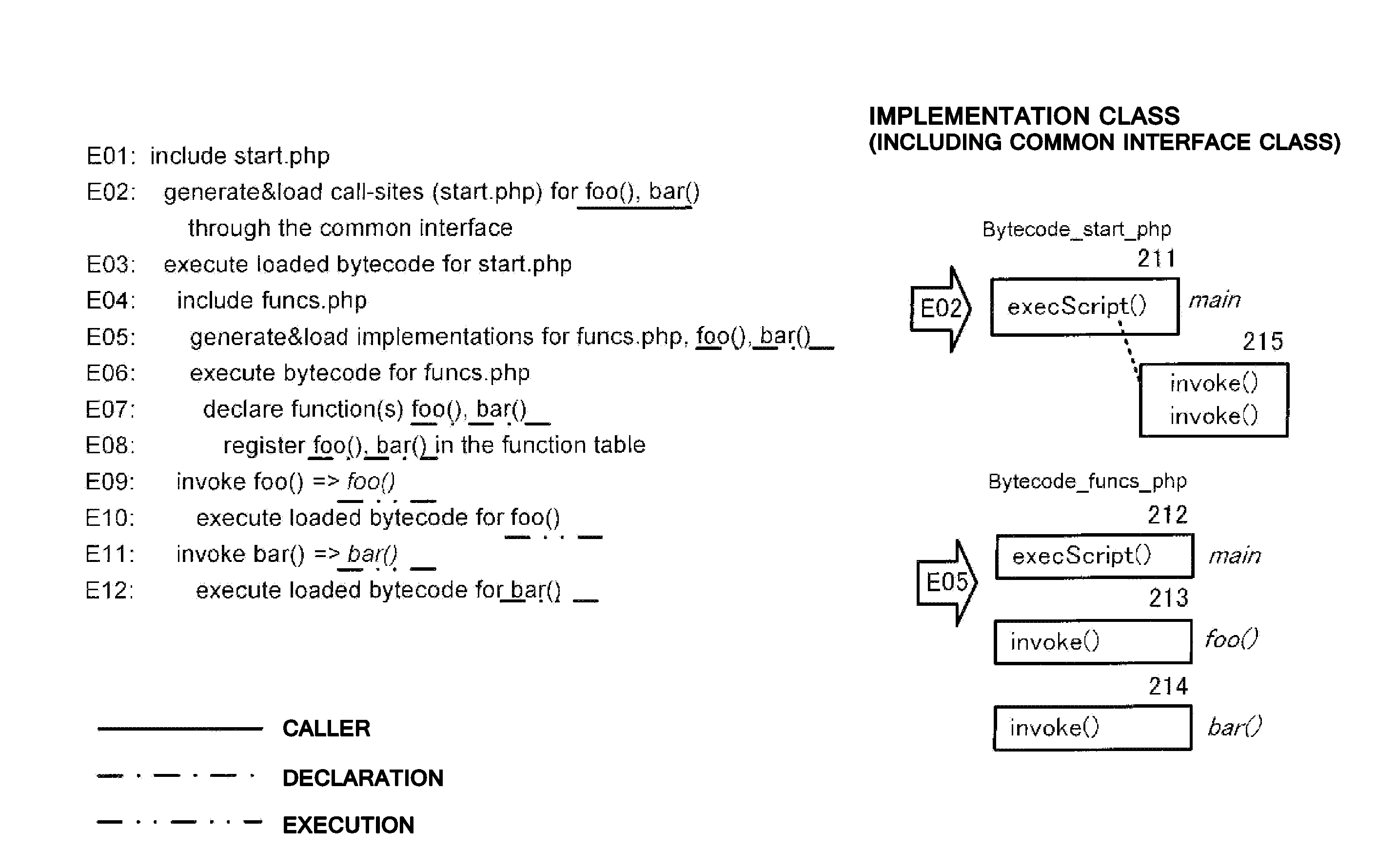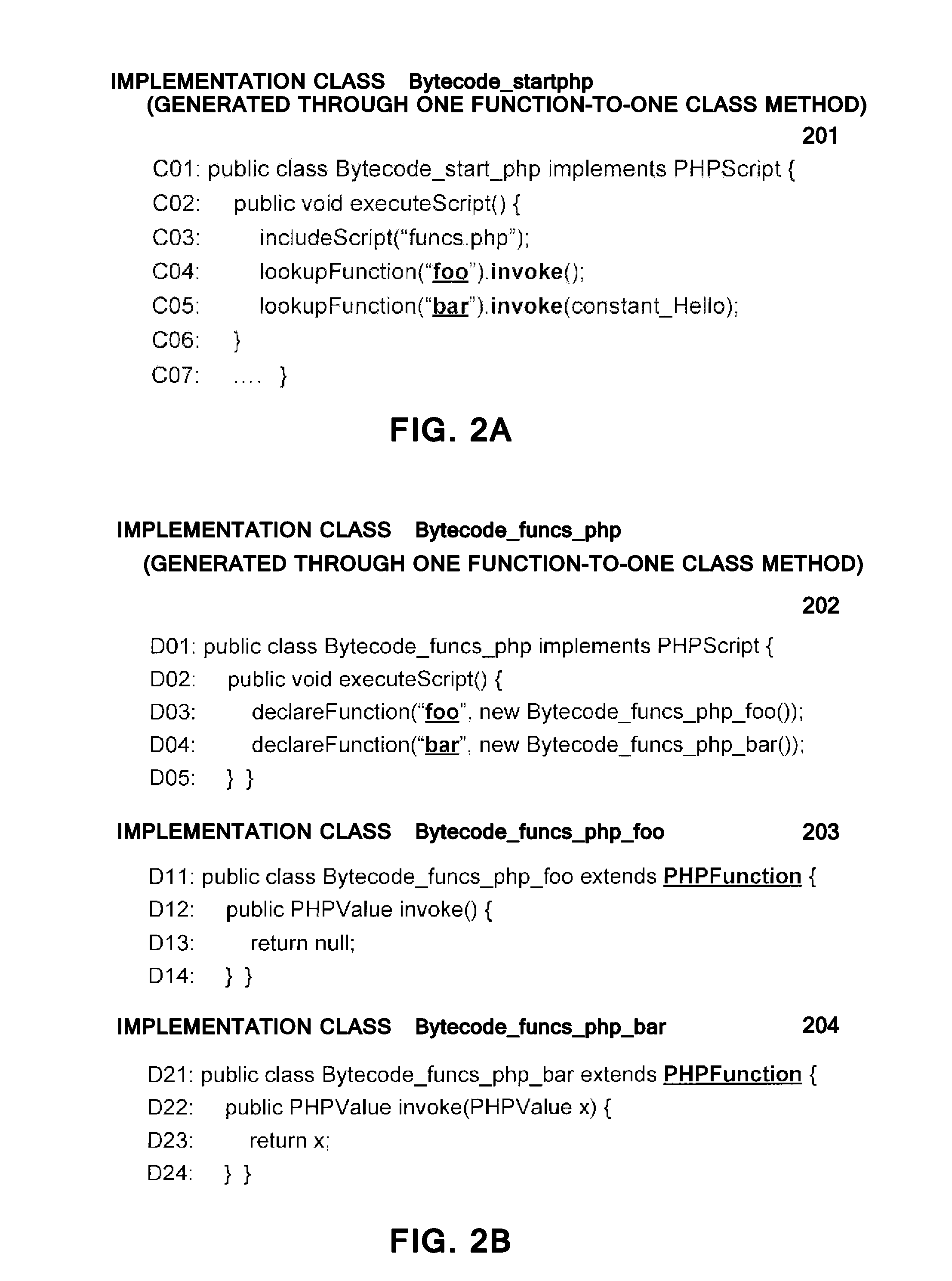Method, computer program and computer system for converting source code written in dynamically typed language into target code written in statically typed language and executing target code
a dynamically typed language and target code technology, applied in the field of electrical and electronic arts, can solve the problems of inability to specify the type of its callee in general, the inability to efficiently execute the caller for each method/function, and the inability to independently define the function in statically typed language. achieve the effect of efficient system establishment and reduce memory consumption
- Summary
- Abstract
- Description
- Claims
- Application Information
AI Technical Summary
Benefits of technology
Problems solved by technology
Method used
Image
Examples
example 1
[0438]In the case of SugarCRM 5.0.0c which is an open source CRM application, 2686 interface classes were generated through the one function-to-one class method while 941 interface classes were generated through the multiple functions-to-one interface method being an embodiment of the invention. Thus, the number of interface classes generated through the multiple functions-to-one interface method was less by 1923 than that generated through the one function-to-one class method.
[0439]As can be seen from the above result, the multiple functions-to-one interface method which is an embodiment of the invention is capable of reducing the number of interface classes to be generated as compared to that in the conventional compilation method, without using the slow reflection mechanism. In particular, the larger the number of functions / methods declared on a per-compilation basis (on a file basis, for example) in a source program, the larger number of interface classes the multiple functions-...
PUM
 Login to View More
Login to View More Abstract
Description
Claims
Application Information
 Login to View More
Login to View More - R&D
- Intellectual Property
- Life Sciences
- Materials
- Tech Scout
- Unparalleled Data Quality
- Higher Quality Content
- 60% Fewer Hallucinations
Browse by: Latest US Patents, China's latest patents, Technical Efficacy Thesaurus, Application Domain, Technology Topic, Popular Technical Reports.
© 2025 PatSnap. All rights reserved.Legal|Privacy policy|Modern Slavery Act Transparency Statement|Sitemap|About US| Contact US: help@patsnap.com



